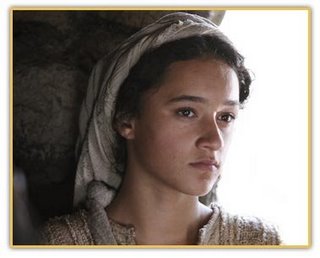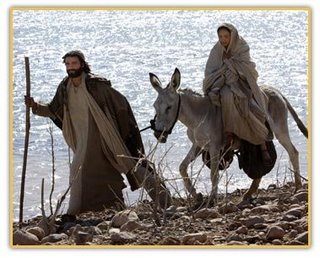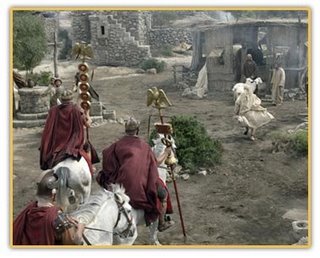 Living in the UK as a Christian in 2006 is a strange experience sometimes. Some fellow believers point to a number of events that seem to suggest that we are entering days of hostility to Christians. Events that have come to my attention in the last few months include:
Living in the UK as a Christian in 2006 is a strange experience sometimes. Some fellow believers point to a number of events that seem to suggest that we are entering days of hostility to Christians. Events that have come to my attention in the last few months include:-
The growing hostility to the use of the word “Christmas” or Christian images – bizarrely this has led to a statement from something called the Christian-Muslim Forum reminding the politically correct brigade that Muslims (and presumably those of other faiths, too!) are NOT in fact offended by us celebrating Christmas!
-
The national airline fighting to prevent flight attendants from wearing crosses – which led to the Prime Minister urging BA to get on the right side of common sense on that matter.
-
The arrest of a Christian for giving out leaflets at a gay march.
-
The potrayal of a fictional “Christian terrorist” atrocity being planned with the full knowledge of an Anglican bishop in the popular BBC programme, Spooks.
- The increasing religious discrimination on University campuses.
-
An active campaign to prevent the selection to stand as a conservative MP of a woman whose only crimes consist of going to a church and being married to a pastor.
-
The blatant attempts to link all religion with extremism and terrorism by even respectable newspapers.
-
Attempts to pass legislation that many fear will limit religious freedom.
According to some we are not far from entering a police state, and real persecution is not far away. There is, however, as always, two sides to the story. The increasing resurgence in Bible-believing Christianity is throwing our society into clear contrast and leading to some interesting developments. In London in particular, the last few years have seen the emergence for the first time of megachurches, and there are many church plants beginning up and down the country. There is much to be grateful for.
One of these developments is the sudden realisation by the film industry that Christians watch films, too. So, this Christmas, not only is there a terror-ridden film called “Black Christmas” being shown in cinemas, alongside it will be The Nativity Story, which wouldn’t be at all out of place being shown in a Sunday School class.
I was thrilled to be invited to watch a preview of this film a few days before it goes into general release. It seemed so strange to me – despite the success of The Passion – to be seeing a film like this on the silver screen. It is a sight we are going to need to get used to. I predict that this film will be far more successful than many might think.
 For the truth is that everyone, believer or not, is fascinated by the story of Christmas. And, as Christians, this is a film that I believe we can endorse with confidence, and take our non-Christian friends along to. It is not purely a children’s film, but it is suitable in my view for all but the youngest and most sensitive of children. There are a few brief episodes of violence, but nothing that I wouldn’t allow my children to see.
For the truth is that everyone, believer or not, is fascinated by the story of Christmas. And, as Christians, this is a film that I believe we can endorse with confidence, and take our non-Christian friends along to. It is not purely a children’s film, but it is suitable in my view for all but the youngest and most sensitive of children. There are a few brief episodes of violence, but nothing that I wouldn’t allow my children to see.
There is a long tradition of artistic works being inspired by the story of Christ. Modern filmmakers may believe that they have discovered a new genre and new ways of marketing these kind of films. But is this so very different from the church nativity play – which often takes poetic license – or indeed the traveling plays of centuries ago which taught the Bible to illiterate masses?
These days our society is returning to having a functionally illiterate mass of people and a more literate elite who at least know how to use a Google search to return almost any useful piece of information they require! It should be no wonder that some are turning to the screen to retell the greatest story ever told, and I, for one, believe that the church as a whole should get right behind it – if we all attend this film, it will be another encouragement to filmmakers to produce wholesome material. It would be an amazing vindication of the power of market forces if eventually Hollywood realised that making blatantly immoral material was no longer profitable.
What is interesting is that the filmmakers are already increasingly convinced that producing a film that the Christians will like will mean making a significant profit. Why else would this film choose to be premiered in the Vatican – the first time that the world premiere of any film has taken place there?
This film is no Catholic propoganda, however. Mary (played by Kisha Castle-Hughes, who played the Queen of Naboo in Star Wars III – The Revenge of the Sith) is portrayed as a normal young woman with doubts and fears rather than a sinless saint. The way Castle-Hughes exudes both youthfulness and emerging womanhood is masterful. The story attempts to get inside her mind and the mind of Joseph, and in so doing gives the age-old story a new lease on life. It certainly seemed to work for me.
Director Catherine Hardwicke said, “I had seen the Nativity Story just as we all do – a few simple passages with minimal detail and almost no insight into who Mary or Joseph were as people. But in Mike’s script, I saw this opportunity to really get inside the heads, hearts, and souls of this young couple. This story means so much to people all over the world. I thought by humanizing them, audiences could relate to the film on a personal level and find some inspiration to get through their own challenges and difficulties.”
Hardwicke goes on to say, “We were looking for epic intimacy. The story is grand and sweeping, stretching across breathtakingly beautiful terrain, yet we want to feel deeply what this couple felt – each of their physical and emotional obstacles – in a very personal visceral way.”
 There are a number of the makers of this film who profess a Christian faith and claim that they had a sense of calling to produce the film. The writer speaks of being on his church’s prayer list throughout production.
There are a number of the makers of this film who profess a Christian faith and claim that they had a sense of calling to produce the film. The writer speaks of being on his church’s prayer list throughout production.
The film really does have an authentic middle-eastern feel – with actors who look and sound like I imagine the biblical characters really would have. The truly multicultural cast included actors from Trinidad, Iran, Guatemala, Cameroon, and Jordan – this is no European Jesus story. There is no mistaking one of the points of the film – Jesus really was a Jew born into a cruel Roman-occupied world. The film was shot in the same area of Italy used in The Passion.
A number of plausible, but fictional, events are introduced
to the film that cleverly foreshadow significant events of Jesus’ adult life – these include the temple cleansing, washing of the disciples’ feet, and even the crucifixion. These are subtly done, and you might miss them if you aren’t watching for them.
I saw the movie with a room full of “cynical hacks,” and yet the film seemed to be affecting them emotionally. At one of the most impactful moments of the film, there was a sudden brief cackle of laughter as a line hit home. To be confronted with what was, to our ears, a humorous line suddenly made you realise afresh just what announcing that she had conceived a child “by the Holy Spirit” must have been like for Mary. The young girl tries to persuade her parents of the truth of her claims to have “broken no vows” by telling them that her cousin, Elizabeth, had a child in her old age. Their retort was simply “But Elizabeth has a husband!” In a matter of seconds, however, it doesn’t seem funny any more as you see the villagers preparing to stone her.
The irony is that the sinless one was born into a situation that looked to the outsider very much like it was a most sinful one. To be pregnant before consummation of your marriage might not be a great issue today, but back then it could cost you your life.
 When Joseph refuses to accuse her, and stands by her, the attitudes of the villagers are wonderfully portrayed. Suddenly, you realise that Mary would have probably been glad to leave Nazareth for Bethlehem with her new husband.
When Joseph refuses to accuse her, and stands by her, the attitudes of the villagers are wonderfully portrayed. Suddenly, you realise that Mary would have probably been glad to leave Nazareth for Bethlehem with her new husband.
The film is very much about journeys – the pain and difficulties of traveling in those days before roads and planes are brought home. But more than that, we see the journey of Mary from being a child who is frightened of marriage to a man she barely knows to a woman who falls in love with the protective Joseph and gives birth to a child who Joseph wonders if he will ever be able to teach anything to.
There really are some great artistic touches along the way, and mine were not the only eyes in the house that needed wiping by the end. It remains to be seen how touched the old hacks really were – or how much their editors allow them to be – but this blogger found himself reliving the story as though I had heard it for the first time. The emotional impact was certainly very significant for me, and I will definitely be taking my whole family (with children ranging from 3 to 9) with great anticipation of the joy they will get from the film and what they will learn.
Just in case your children ask you, here are a couple of final facts for you – firstly American Humane made sure that no animals were harmed during the filming, and secondly there are now sufficiently more trees in Tensas National Wildlife Refuge in Louisiana to counteract the films “climate change footprint.” For some reason, those two statements intrigued me, so I thought I would share them here!
Other Links about the Film
Allthings2all on The Nativity Story reports being undone, but points out some minor deviations from the biblical account such as the Magi and shepherds arriving on the same day, but these are easily classified under artistic license.
The Nativity Story, UK and The Nativity Story, US official sites are well designed and there is a generous encouragement of the use of images for church materials
I will leave you with two interviews from a site of video clips about the film that you can embed in your blog if you want to.












